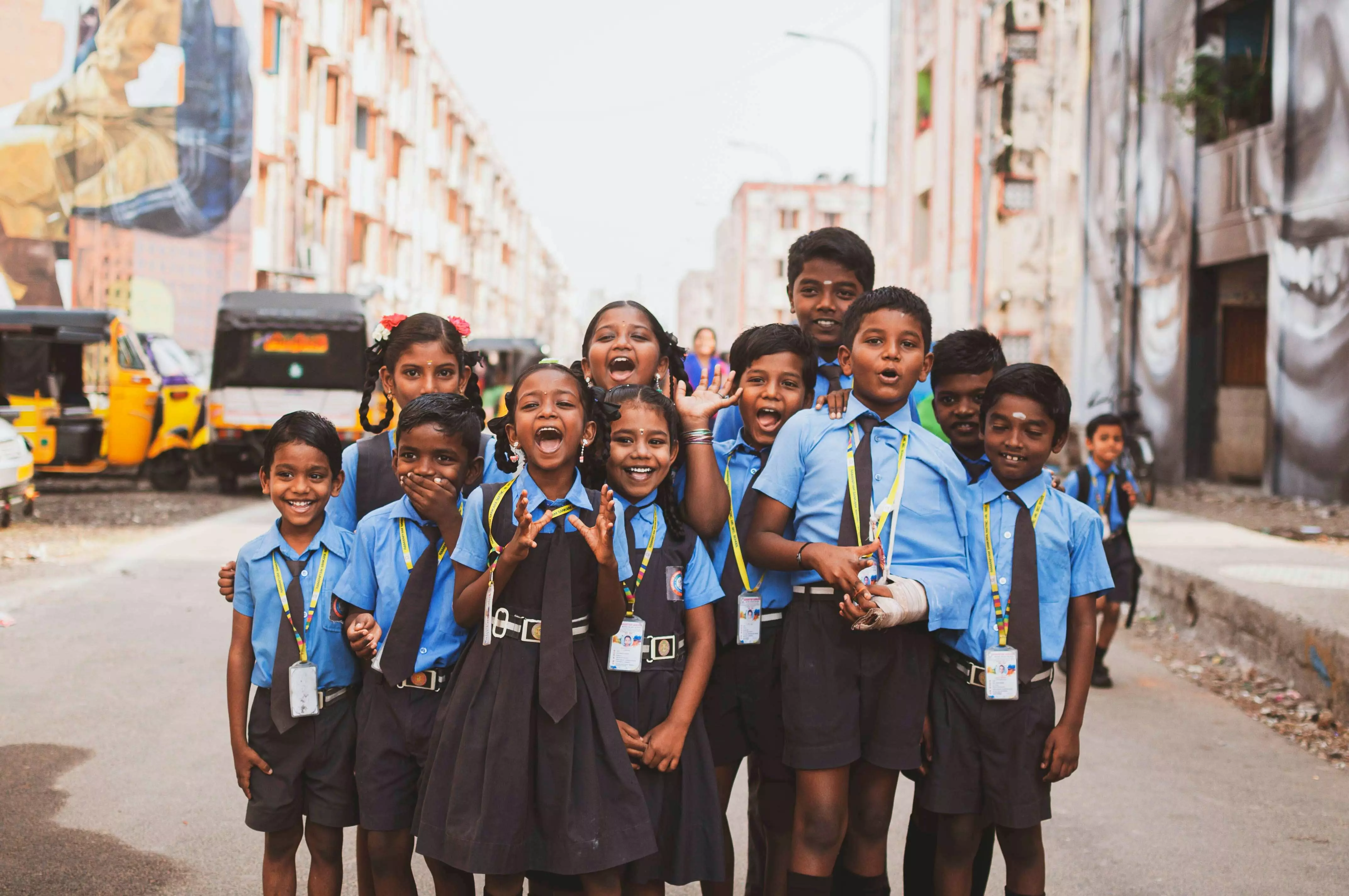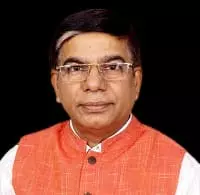Ahead of the curve
During the last nine years, the Indian government has taken massive strides in all sectors, including education, to take the nation on a transformative trail

As the Modi Government completes nine years in office, we stand at the precipice of a landmark era. India’s aspiration to assume its rightful place as a great power required some big changes, and the 9 years of the Modi government are a testament to a new era of growth and development.
A fundamental shift in the governance under Prime Minister Modi’s leadership has not only yielded results but also changed people's perception about government institutions. The last nine years in office have been full of new challenges that were overcome with strong political will and decisive leadership. Countries across the globe had to undergo a tectonic shift in the way they operate after the Covid-19 pandemic, and India showed the world how to convert calamities into opportunities and what it means to be truly anti-fragile.
Since 2014, India has prospered in the sector of physical infrastructure, ranging from the unrecognisable makeover of the Indian roadways to metros, 6 kilometres in length being added every month, 74 new airports set up, flagging of Vande Bharats across the nation. Connectivity is no longer a distant utopian wish but a reality. 31.36 crore households now have access to LPG connections under the Ujjwala Scheme. Under the Swachh Bharat Mission Gramin - SBM(G), a total of 11.14 crore Individual Household Latrines and 2.23 lakh Community Sanitary Complexes have been constructed in India since its launch on October 2, 2014.
The Ayushman Bharat Digital Mission is realising the vision of building a digitally connected healthcare ecosystem. Over 25 crore health records of individuals have been linked to their Ayushman Bharat Health accounts. Over 5.65 crore mothers and children have been protected by Mission Indradhanush, with over 15 crore teleconsultations through Health Wellness Centres. 15 new AIIMS and 225 medical colleges have been added, with a total of 69,663 medical seats added since 2014. Approximately 4 crore rural and urban houses have been constructed under the PM Awas Yojana. 11.88 crore households now have tap water connections as on march 2023.
By 2030, it is expected that India will have the greatest population of young people in the world. If we are to optimise this potential, we must create an adept workforce to face all the changes and developments the world undergoes.
One of the key focus areas of the government has been education. With a vision to empower the nation's youth and provide them with quality education, the government has implemented numerous initiatives to revamp the education landscape. One of the major steps taken by the government to achieve this is the introduction of the first major overhaul in the educational policy after 34 years, by bringing in the National Educational Policy (NEP) 2020.
The NEP 2020 has brought about a transformative wave in the education sector. This landmark policy has recognised the crucial need for reform and has laid the foundation for a holistic and inclusive education system. One of the key aspects of NEP 2020 is the shift towards a multidisciplinary approach, emphasising the integration of arts, sciences, and vocational subjects. It also focuses on promoting critical thinking, creativity, and problem-solving skills among students. Another significant aspect is the emphasis on early childhood care and education. NEP 2020 also aims to reduce the burden of exams and rote learning. Moreover, it promotes the use of technology in education and aims to bridge the digital divide among students.
Teacher training will be a major focus as well. It is of absolute importance that we provide the resources to enhance the existing skill sets of teachers, to rise to the challenges posed by a changing world. Teacher preparation is an activity that requires multidisciplinary perspectives and knowledge, the formation of dispositions and values, and the development of practice under the best mentors. Teachers must be grounded in Indian values, languages, knowledge, ethos, and traditions including tribal traditions, while also being well-versed in the latest advances in education and pedagogy.
The Rashtriya Uchchatar Shiksha Abhiyan (RUSA) and the Samagra Shiksha scheme have played a crucial role in providing funds for the construction and upgradation of schools, colleges, and universities. These initiatives have focused on improving classroom infrastructure, including the provision of libraries, laboratories, and ICT facilities. The efforts to enhance infrastructure have created a conducive learning environment and positively impacted the educational experience of students.
To foster research and innovation in the field of education, the Modi government has launched various initiatives such as the IMPRINT (Impacting Research, Innovation, and Technology) India program, the Prime Minister's Research Fellowship (PMRF) scheme, and the Atal Innovation Mission. These programs aim to promote research collaboration between academia and industry, support innovation-driven startups, and encourage scientific and technological advancements. The emphasis on research and innovation has nurtured a culture of curiosity and critical thinking among students and educators.
The Digital India campaign, launched in 2015, has played a pivotal role in revolutionising education by promoting digital learning and technology integration in schools and universities. Under this initiative, the government has implemented several measures to enhance digital infrastructure, Internet connectivity, and e-learning platforms across the country.
The Digital India campaign has facilitated access to quality educational resources, including online courses, digital libraries, and interactive learning tools, thereby democratising education for students in remote areas. The increased availability of digital resources has also supported teachers in delivering engaging lessons and fostering interactive learning experiences, especially in the post covid world.
The nine-year tenure of Prime Minister Narendra Modi's government has witnessed significant progress and positive developments in the field of education in India. Through initiatives such as Skill India, Digital India, Start-up India, Stand-up India and investments in infrastructure and research, the government has strived to empower youth, bridge educational gaps, and promote inclusive and quality education. These efforts have not only improved access to education but also fostered skill development, digital literacy, and gender equality. As India continues on its path of growth and development, the education reforms implemented under the Modi government have laid a solid foundation for a more prosperous and knowledge-driven future. There is no doubt in saying that India is one of the fastest growing economies of the world and we have come a long way already with the government’s people-centric and pro-development policies. But this is just the beginning of the golden era of India as we just entered the ‘Amrit Kaal’ and the next 25 years is the time for India to shine and show the path for the rest of the world.
All of this talk of change makes me feel immensely optimistic about the future of our nation. At this pace, India at 100 will be a sight for the world to see, a force to reckon with. The future is ours for the taking, if only we are brave enough to dream of it, and persistent enough to work towards it. However, getting somewhere requires a plan and appropriate actions, and in that respect, under the leadership of Hon’ble Prime Minister, we are well on our way to achieving this milestone of Vikasit Bharat.
Views expressed are personal



